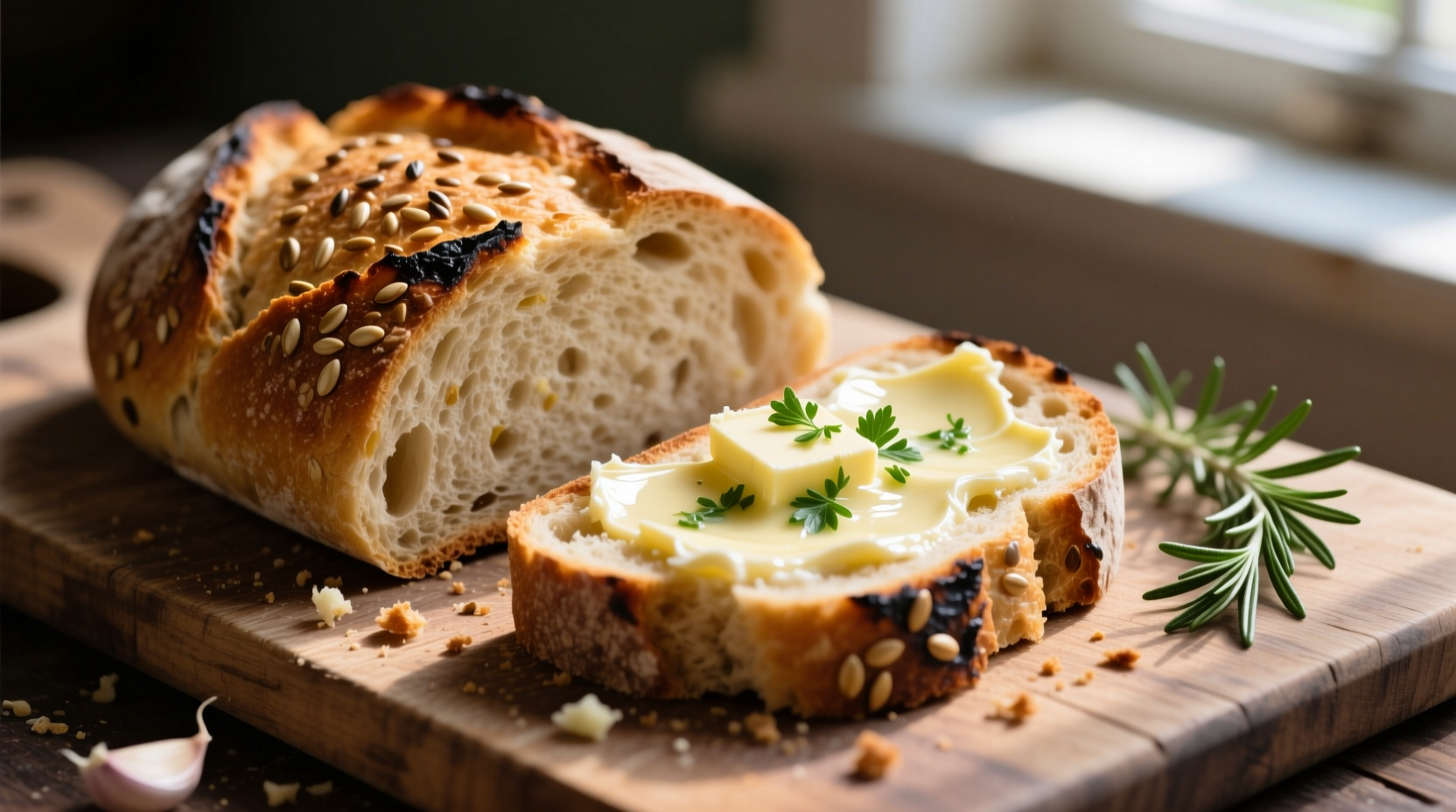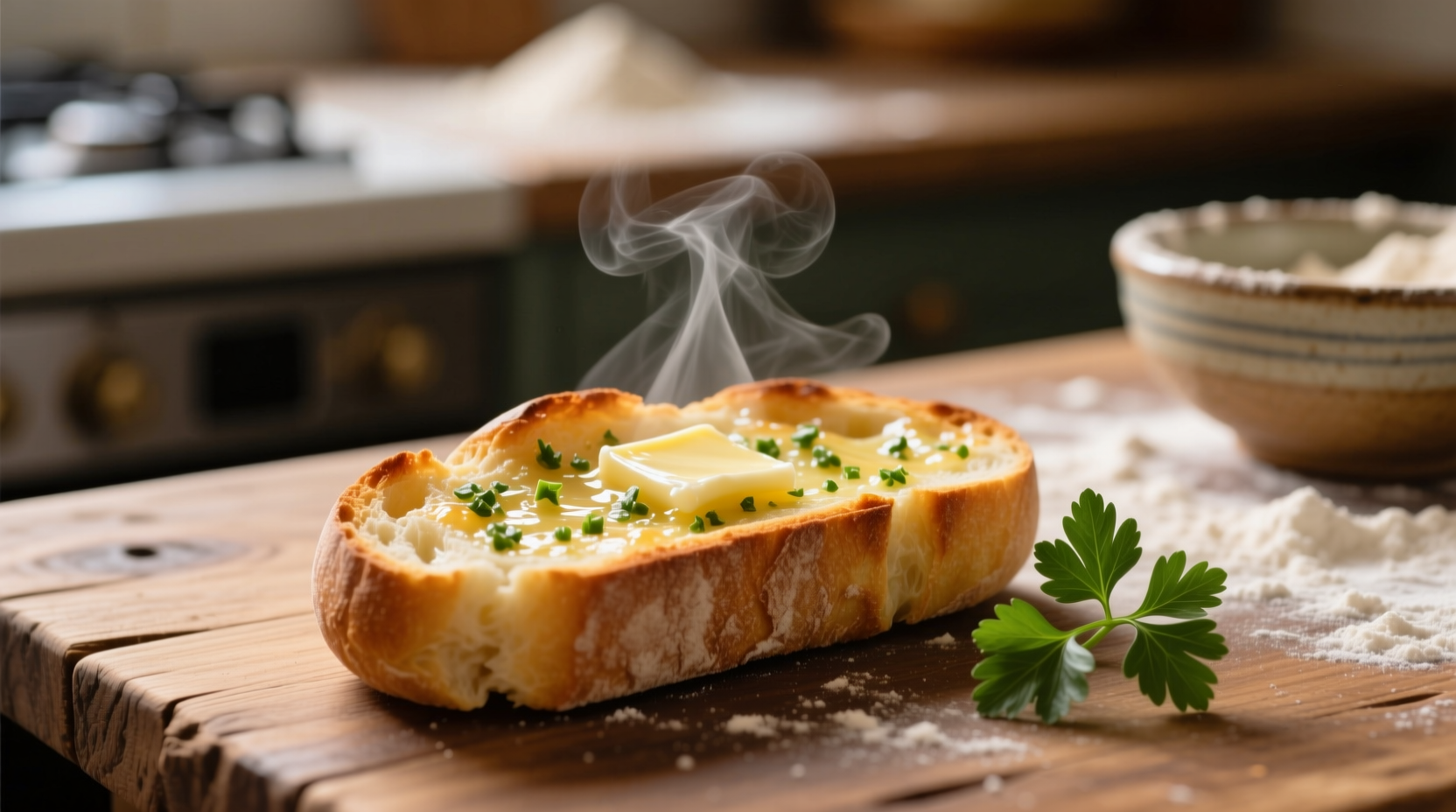What's Really in Your Garlic Bread?
Understanding whether garlic bread is healthy requires examining its core components. Traditional garlic bread combines three main ingredients: white bread, butter or margarine, and garlic. Each contributes to both its delicious flavor and its nutritional impact.
According to USDA FoodData Central, a typical 2-ounce (56g) serving of restaurant-style garlic bread contains approximately:
| Nutrient | Amount per Serving | % Daily Value |
|---|---|---|
| Calories | 250 | 13% |
| Total Fat | 12g | 15% |
| Saturated Fat | 5g | 25% |
| Carbohydrates | 30g | 11% |
| Fiber | 1g | 4% |
| Sodium | 350mg | 15% |
The primary nutritional concerns with traditional garlic bread come from its refined flour base and high saturated fat content from butter. However, the garlic component offers some noteworthy health benefits that shouldn't be overlooked.
The Health Benefits of Garlic: More Than Just Flavor
Garlic contains allicin, a sulfur compound formed when garlic is chopped or crushed. Research published in the Journal of Nutrition confirms that allicin provides antioxidant and anti-inflammatory effects. The National Center for Complementary and Integrative Health notes that garlic consumption may support cardiovascular health by potentially lowering blood pressure and improving cholesterol levels.
For maximum benefit, let chopped garlic sit for 10 minutes before cooking. This allows the alliinase enzyme to fully convert alliin to allicin, significantly increasing the bioactive compounds according to studies from the University of California, Davis.

Health Concerns: Why Traditional Garlic Bread Falls Short
While garlic offers benefits, traditional garlic bread preparation creates several nutritional challenges:
- Refined carbohydrates: Most garlic bread uses white bread, which has been stripped of fiber and nutrients during processing. This leads to rapid blood sugar spikes followed by crashes.
- High saturated fat: Butter-based garlic spreads contribute significant saturated fat. The American Heart Association recommends limiting saturated fat to 5-6% of daily calories, which a single serving of traditional garlic bread can exceed.
- Calorie density: Garlic bread packs substantial calories into a small volume, making overconsumption easy without feeling full.
A study in the American Journal of Clinical Nutrition found that replacing refined grains with whole grains significantly improved markers of metabolic health in participants. This finding directly applies to making healthier garlic bread choices.
Transforming Garlic Bread into a Healthier Option
The good news is that with thoughtful modifications, you can create garlic bread that aligns better with healthy eating patterns. As a European cuisine specialist with expertise in traditional spice applications, I've developed these practical strategies that maintain authentic flavor while improving nutritional value:
Choose Better Bread
Opt for whole-grain or sourdough bread instead of white bread. Whole grains provide more fiber, which slows digestion and prevents blood sugar spikes. Sourdough's natural fermentation process may improve digestibility and nutrient absorption.
Revise Your Fat Base
Replace half or all of the butter with extra-virgin olive oil. The Mediterranean Diet, recognized by the Dietary Guidelines for Americans as a healthy eating pattern, emphasizes olive oil as a primary fat source. This swap reduces saturated fat while adding heart-healthy monounsaturated fats.
Maximize Garlic Benefits
Use fresh garlic rather than pre-minced or powder. Crush 2-3 cloves per serving and let them rest before mixing with oil. This technique preserves more allicin than cooking garlic immediately after chopping.
Portion Control Matters
Enjoy garlic bread as a side rather than the main focus of your meal. A single slice (about 1 ounce) paired with a salad or vegetable-based main course creates a balanced plate that satisfies without excess calories.
When Garlic Bread Fits Into a Healthy Eating Pattern
Complete avoidance of foods like garlic bread often leads to unsustainable diets. The key is context:
- Occasional treat: Enjoy traditional garlic bread occasionally as part of an otherwise balanced diet rich in whole foods.
- Smart substitutions: Regularly choose the healthier versions described above when you crave garlic bread.
- Meal pairing: Always serve garlic bread with protein and vegetables to balance the meal's nutritional profile.
The Dietary Guidelines for Americans emphasize flexibility in healthy eating patterns. Garlic bread can fit within these patterns when consumed mindfully and prepared with healthier ingredients.
Practical Tips for Health-Conscious Garlic Bread Lovers
Here are three simple approaches to enjoy garlic bread without compromising your health goals:
- The 50/50 Method: Mix equal parts whole-wheat and white bread for gradual transition to healthier options while maintaining familiar texture.
- The Mediterranean Twist: Create a spread with olive oil, fresh garlic, lemon zest, and a pinch of red pepper flakes for added flavor without extra calories.
- The Vegetable Boost: Add finely minced parsley, basil, or even roasted red peppers to your garlic spread for additional nutrients and visual appeal.
Remember that healthy eating is about patterns over time, not single food choices. As the Academy of Nutrition and Dietetics emphasizes, all foods can fit into a healthy diet with proper portion control and frequency management.











 浙公网安备
33010002000092号
浙公网安备
33010002000092号 浙B2-20120091-4
浙B2-20120091-4